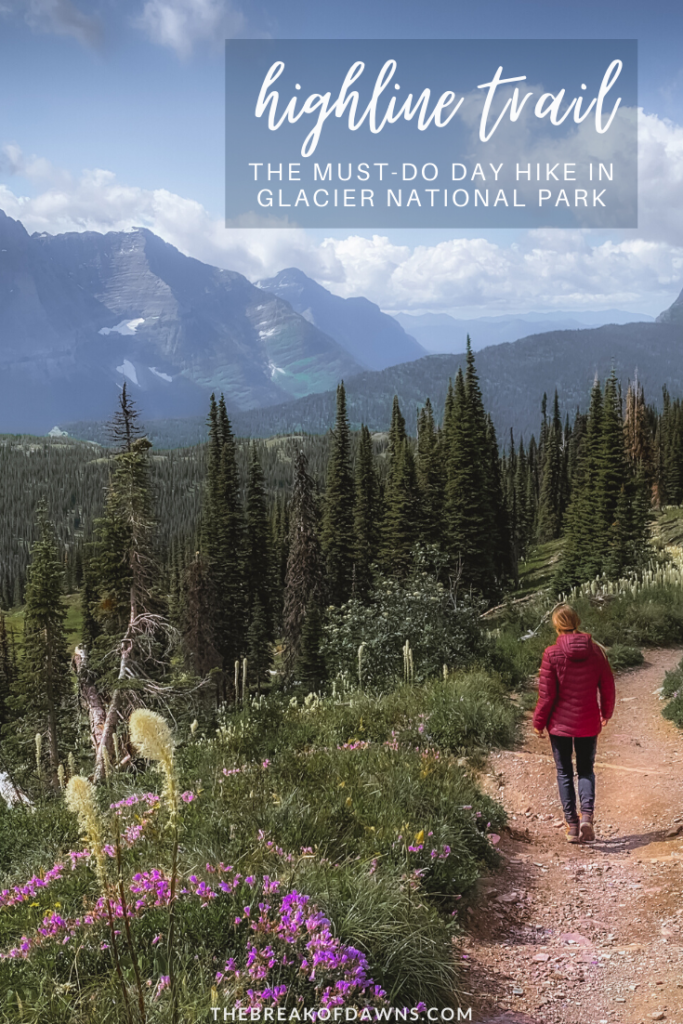
Embarking on a week-long trip to Glacier National Park, I was seeking dramatic views, heart-pumping backcountry treks and the ultimate feeling of being one with the world. Little did I know I’d experience all of those things on the Highline Trail, the best hike in Glacier National Park.
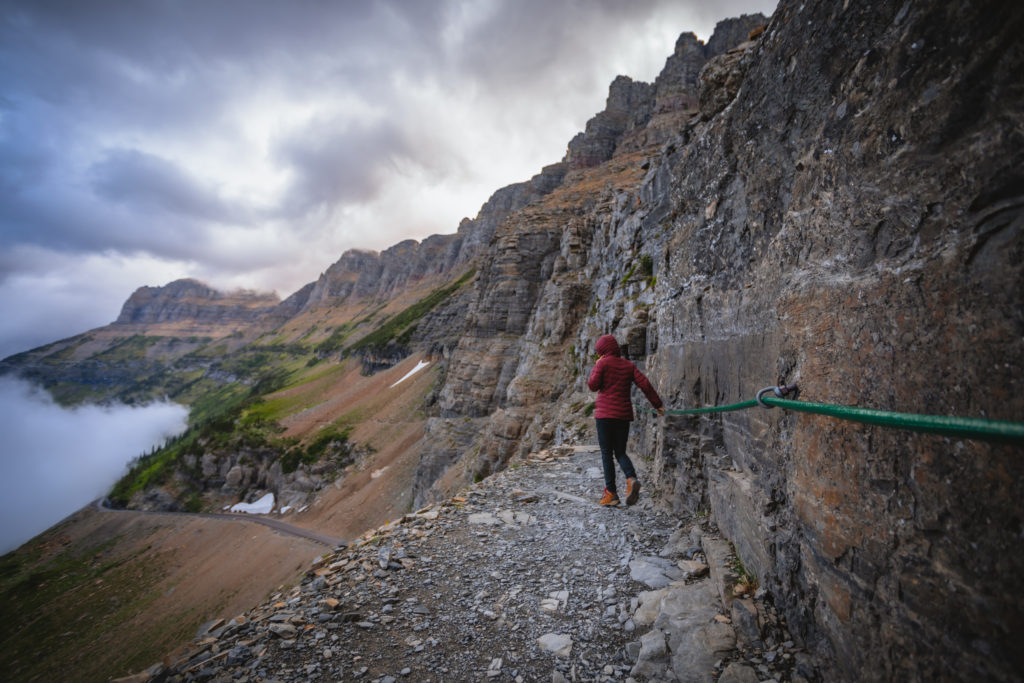
About the Highline Trail
Before my trip to Glacier, I asked some fellow bloggers for recommendations on what not to miss. The common consensus was that the Highline Trail is the best hike in Glacier National Park. Described as the ‘bucket list of all hikes’ for anyone serious about trekking, the Highline Trail is an 11.5 mile trek that brings you through the best views of Glacier.
Winding around rugged cliff edges and through vibrant vegetation, the trail climbs above the Going-to-the-Sun Road. Walking on top of former glaciers displaying snow from an opposite season, it never wean away from the epic landscape of the northern Rockies.
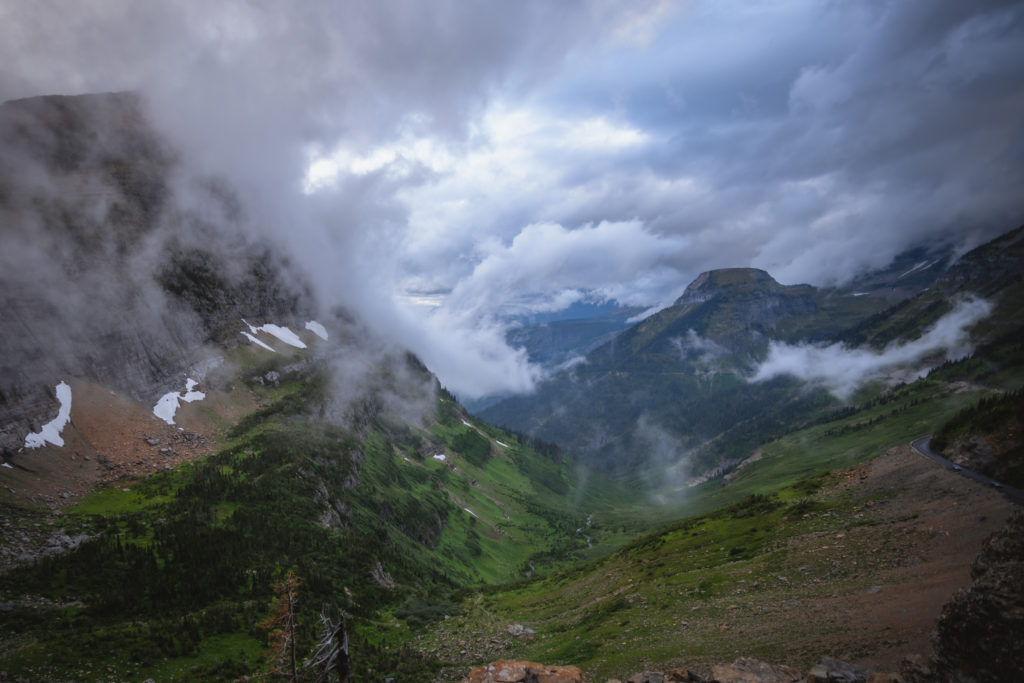
Distance: 11.5 Miles
Type: One-Way
Elevation Gain: +1,500 Feet
Best Time to Hike: June – October
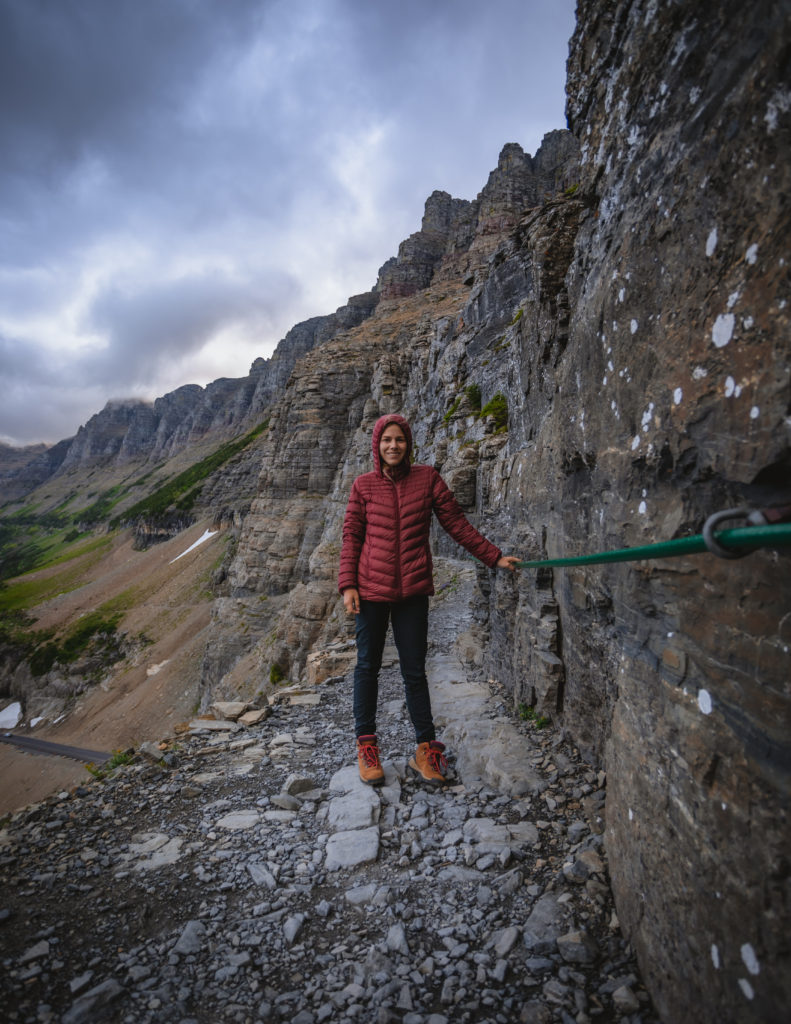
Multiple junctions exist along the Highline Trail, taking you in various directions for longer backcountry experiences. If you plan to spend the night out in these areas, you must obtain a backcountry permit beforehand at one of the ranger stations.
For more information about backcountry permits, check out my complete guide to Glacier’s Backcountry here
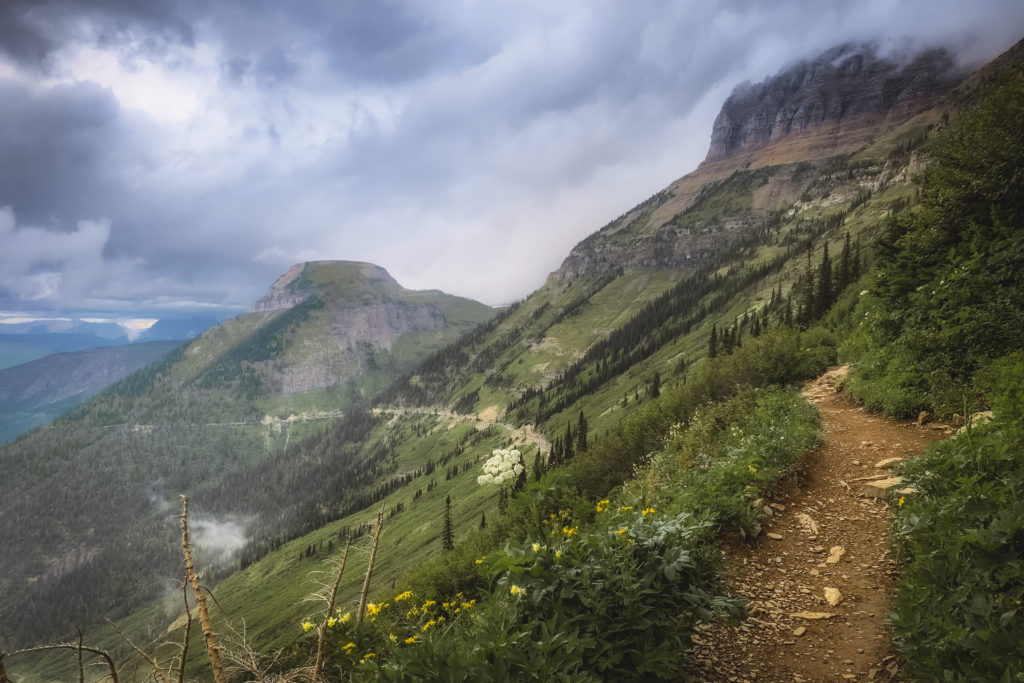
Info for Trekking the Best Hike in Glacier National Park
The Highline Trail is actually only the distance from Logan Pass to the Granite Park Chalet, at around 7.5 miles. This gives you the option to do an out-and-back only trek by retreating the way you came to Logan Pass for a full 15 miles. After reaching the Granite Park Chalet at mile 7.5, there are multiple junctions for different trailheads like the Continental Divide Trail, Swiftcurrent Pass and Swiftcurrent Mountain.
We hiked the full Highline Trail loop by continuing on the Granite Park Trail for another 4 miles and ending at The Loop. Since there are no pedestrians allowed on this portion of the Going-to-the-Sun Road, we took the Glacier NP Shuttle Bus from there back to our vehicle at Logan Pass.
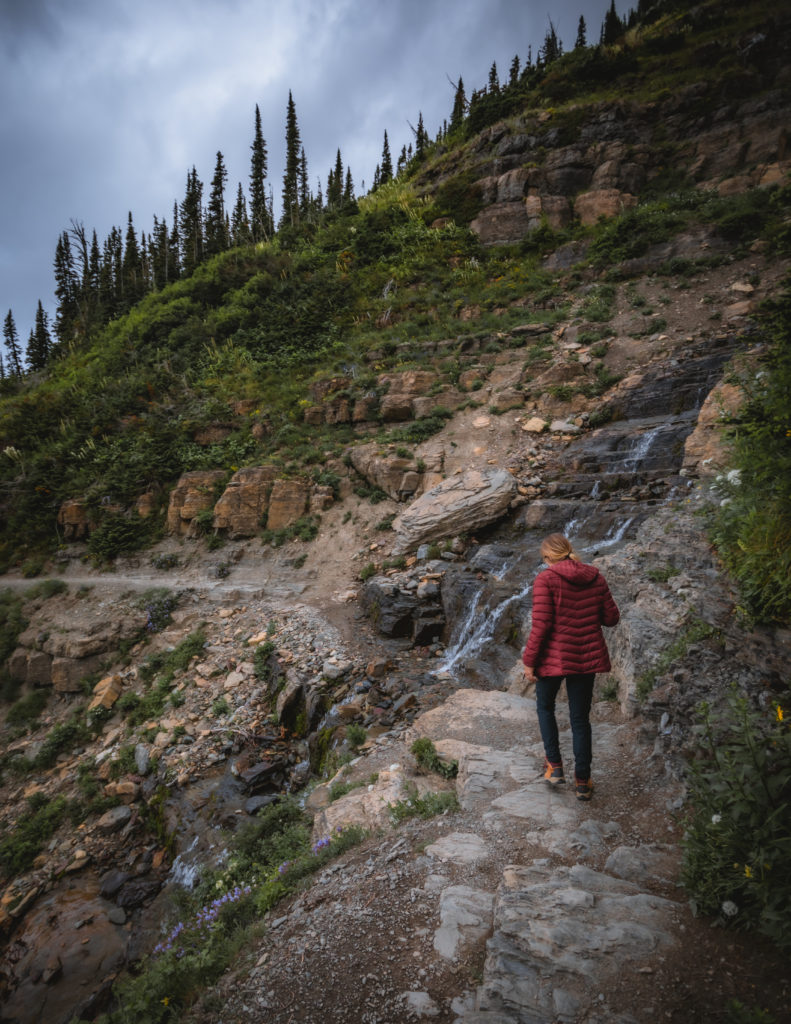
There are two different directions to hike the Highline Trail, both accessible from the Going-To-The-Sun Road:
- Option 1: Beginning at Logan Pass, ending at The Loop
- The recommended option!
- Gains elevation gradually over a 7 mile distance
- Last 4-5 miles of the trail is downhill
- More parking at Logan Pass than the Loop
- Dramatic views from the beginning
- Option 2: Beginning at The Loop, ending at Logan Pass
- The more difficult option
- Gains elevation rapidly over a 4 mile distance
- Last 7 miles of the trail is slightly downhill
- Less parking at The Loop
- Dramatic views don’t begin until mile 4 or 5
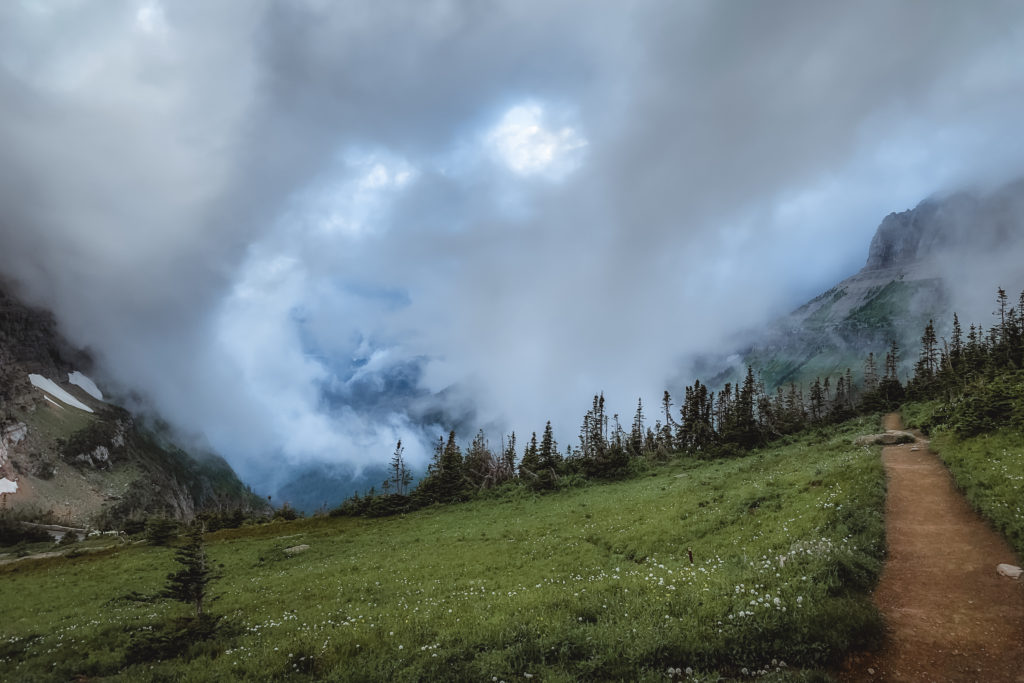
Getting to the Highline Trailhead
To access both trailheads of the Highline Trail, begin from the Going-to-the-Sun Road at either the Logan Pass Visitor Center or The Loop. More parking is available at Logan Pass which is why we preferred that. These lots fill up very early so getting here before 8 AM is more than necessary. We arrived around 6:30 AM and a quarter of the parking lot was already full.
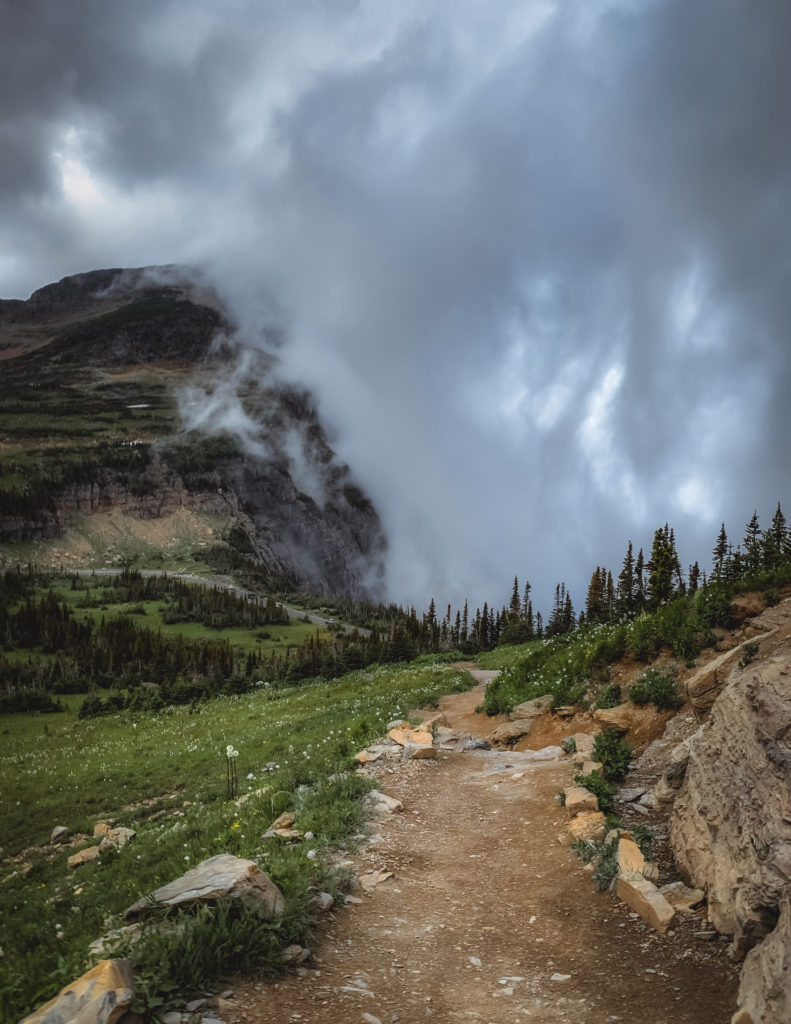
Beginning the Highline Trail from Logan Pass
While packing up our gear for the hike, inclement weather swept in misty clouds all around us. Contemplating whether or not we’re insane to even begin in these conditions, we put our game faces on, zip up our coats and make a bee-line for the trailhead. Leaving the parking lot and crossing the road, we come upon a grassy area before meeting an ever-intimidating ridgeline.
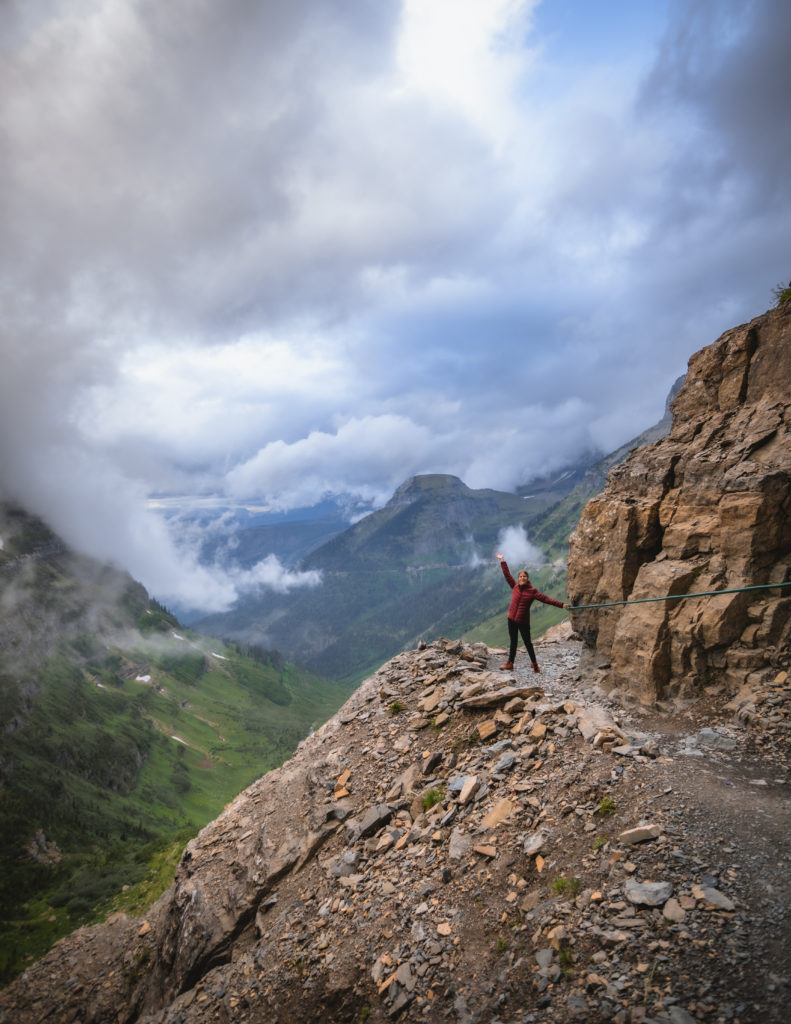
The green rope and metal bar for a handle probably added to that ‘oh crap we’re high up’ feeling. The blistering winds definitely doesn’t help either; I was white-knuckled gripping on, keeping my weight low to the ground. This is definitely the most unsettling portion of the Highline Trail.
Winding around the cliffside, the trail begins to gradually separate from the Going-to-the-Sun Road below. Staring out at the incredible views of Glacier NP, I felt like I was floating in a cloud!
Learn more about driving the Going-to-the-Sun Road here
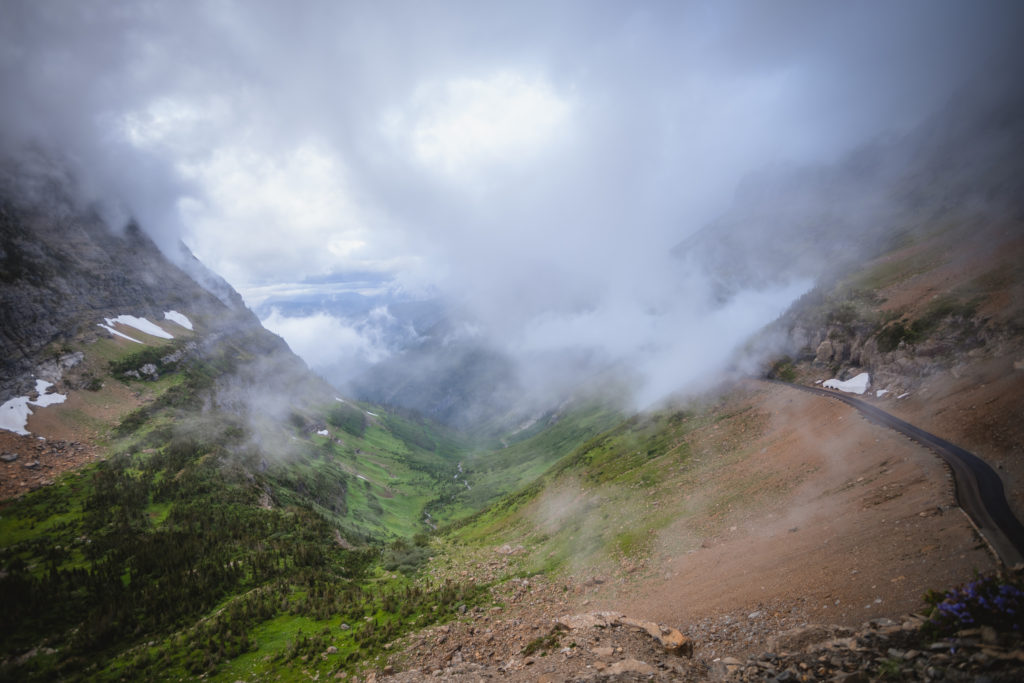
Elevated Climbs with Epic Views
That rugged terrain continues on for a couple of miles, never lacking in incredible views. Around mile 2.5 is a glimpse of the ever-enchanting Reynolds Mountain behind Oberlin Bend. The +550 elevation gain is slight in the first 3 miles, reaching heights at around 7000 feet above sea level. Before reaching the switchback on the most elevated portion of the hike, we pass over multiple subtle waterfalls, counting over 15 within the first quarter of the trail.
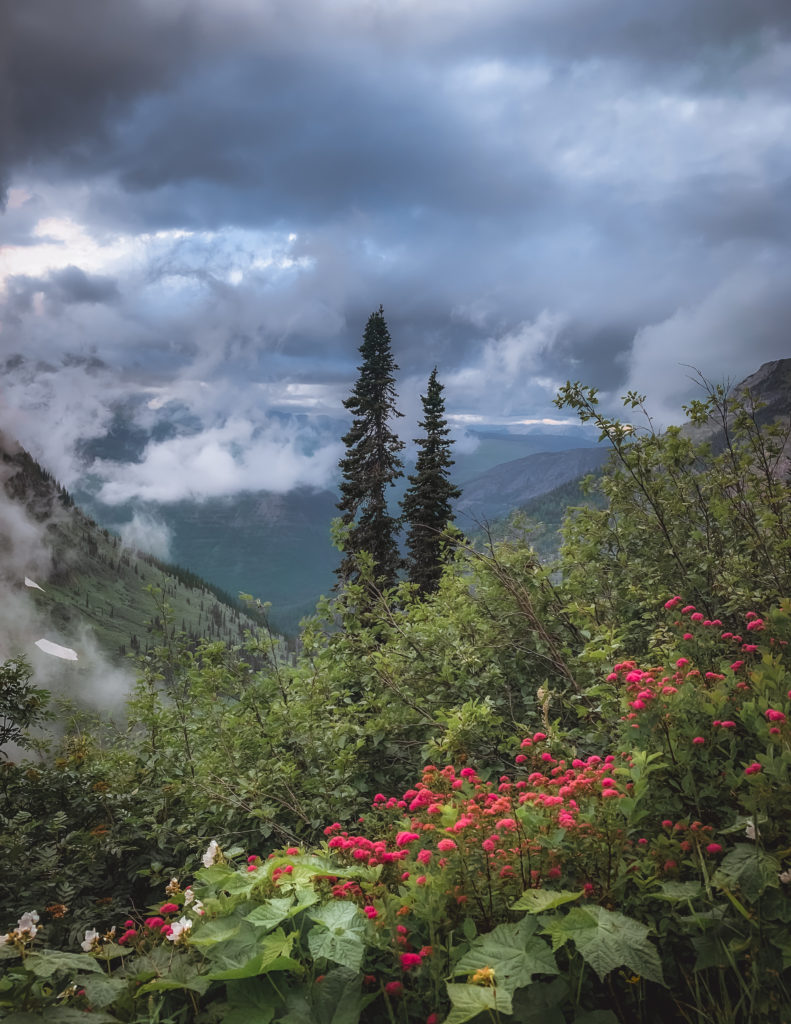
The vegetation grows thicker with pops of colorful wildflowers spread out throughout the grassy knolls. Wildlife begin to make their appearance here too, like little gold-haired marmots and pika, mountainous field mice (be sure to listen for their little squeaks!)
Haystack Butte sits behind a 180-degree view of Glacier, with multiple areas to take a break and drool over the vistas of Mount Cannon, Mount Gould, Reynolds Mountain, and Mount Oberlin.
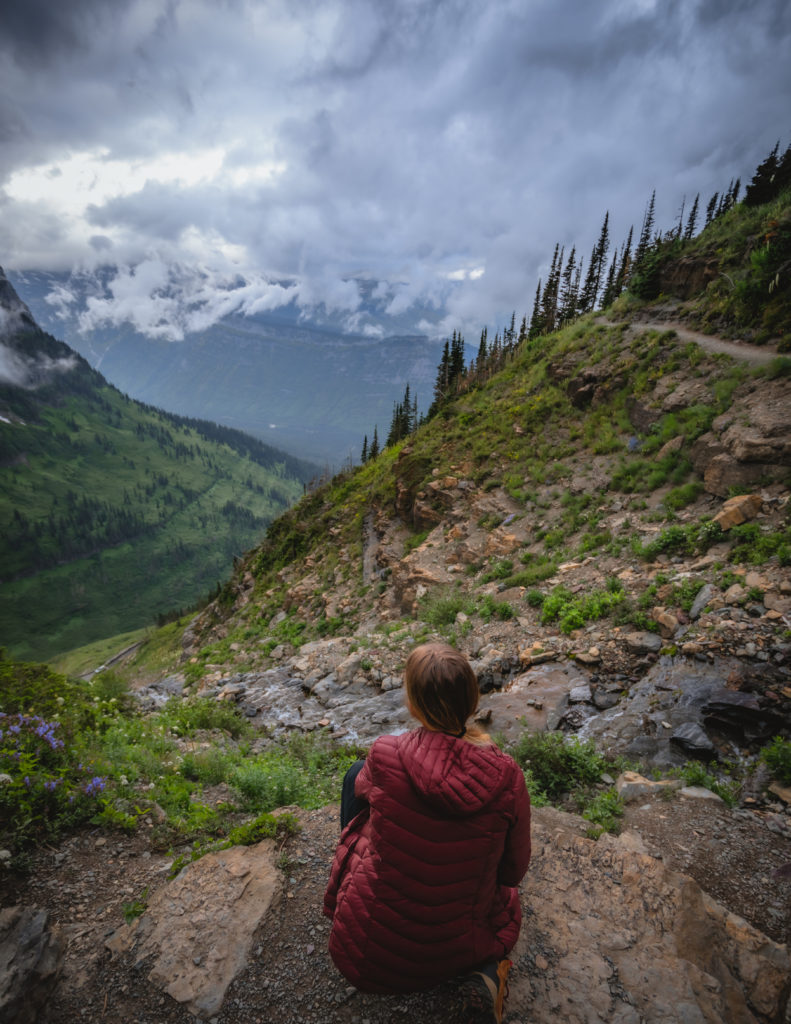
A Cloudy Climb
The best part of our trail experience is just after the biggest elevated climb of +380 feet in mile 4. With clouds closing in all around us, we reach a patch of snowy ground where the fog and mist become more apparent. As we continue uphill, muddy footprints in the snow are the only hint for which direction to go in.
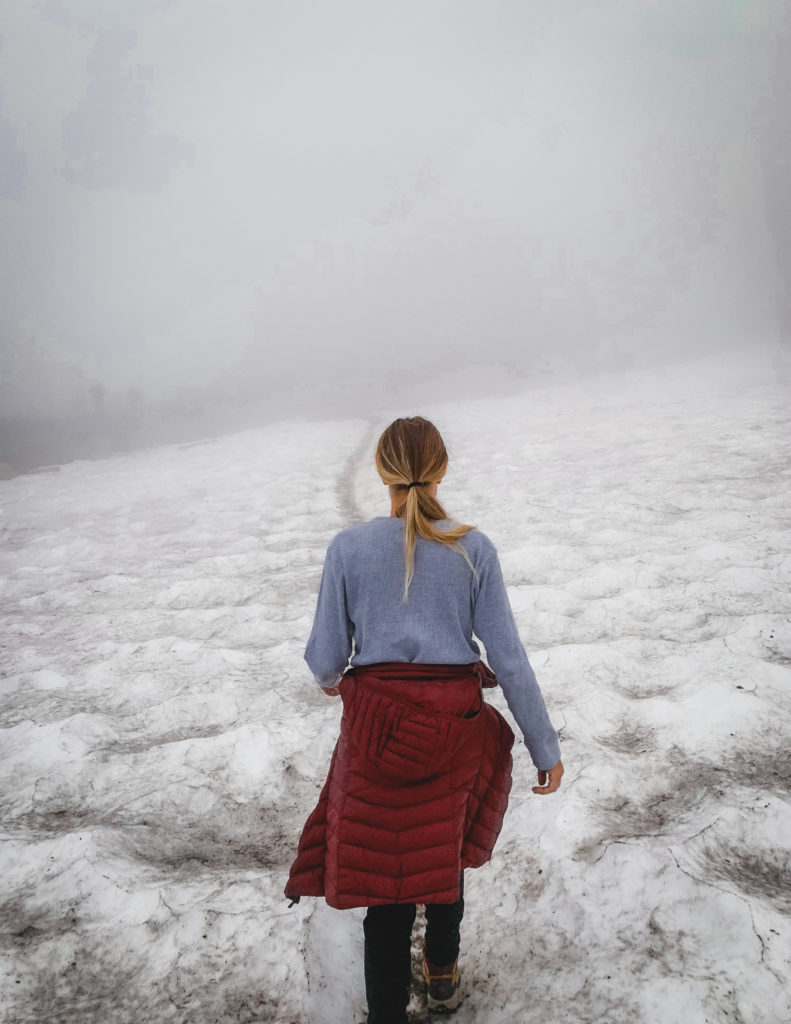
Garden Wall Junction
Between mile 5 and 6 is the junction to the Garden Wall and I can’t express how badly I wish we had the weather to see it. Since our views at this elevation are already obstructed by thick clouds, we figure hiking up any higher is a waste of time. Free of switchbacks, deceivingly rugged and steep, the Garden Wall challenges your legs but also supplies you with one of the most epic views in all of Glacier. Within a half mile, you’ll gain over 800 feet in elevation but, from what I hear, it’s totally worth it. At the summit you’ll have panoramic views of incredulous ice fields, the teal waters of Grinnell Glacier and the lakes of Many Glacier.
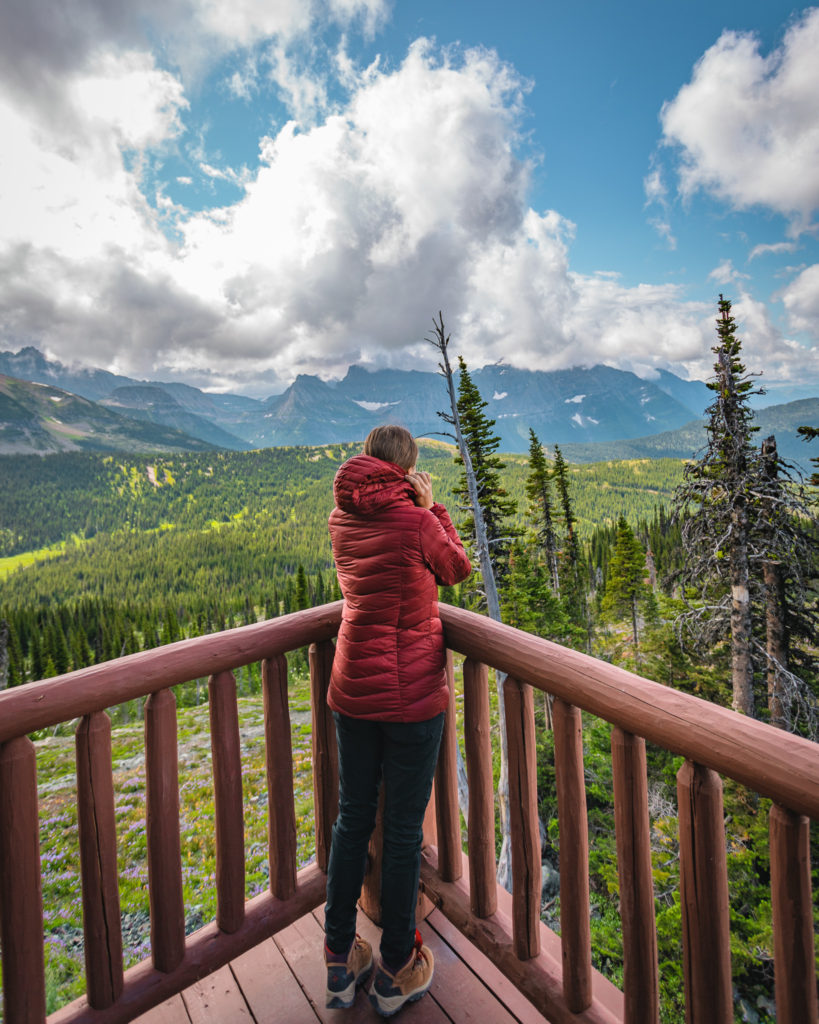
Granite Park Chalet
Within a mile of the Garden Wall Junction is the Granite Chalet, your break-stop for the trek. With a pit toilet and an indoor area to prepare your meals and eat, it’s the perfect spot to take an hour and chill out.
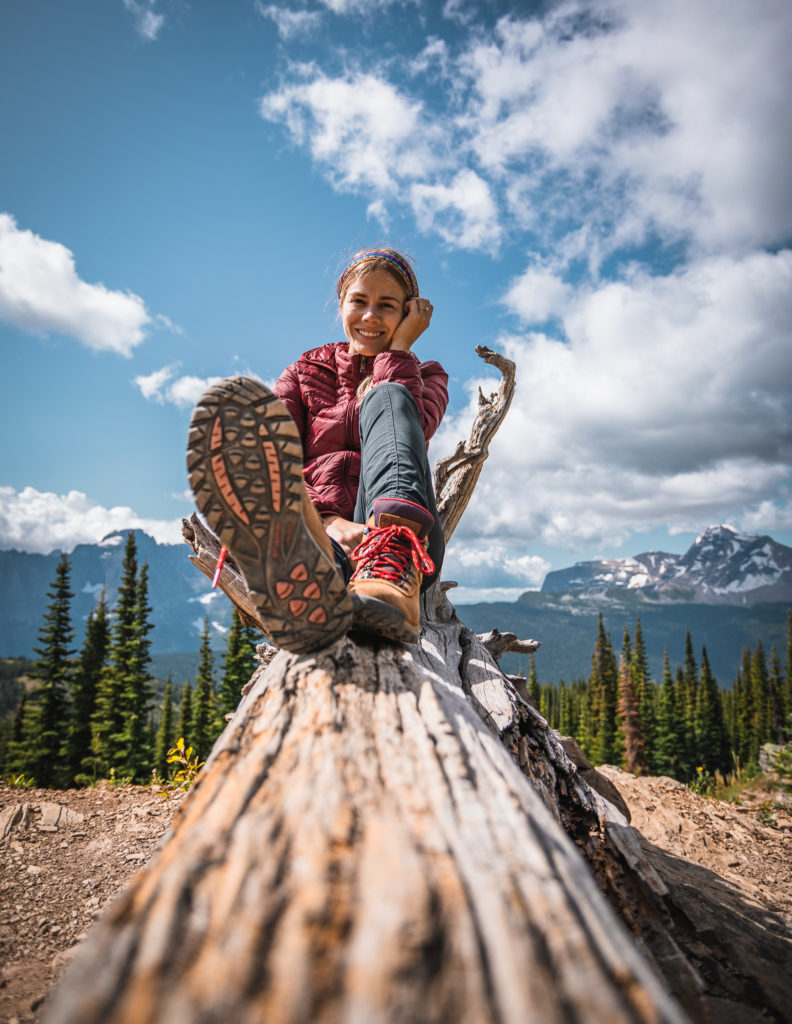
The Granite Park Chalet itself is an accommodation lodge at the peak of the mountain. Experience the backcountry but indoors at the Chalet from June through September (click here for reservations). There’s also a backcountry campground nearby of which you’ll need a permit for. You’ll also find various junctions for different trails here like the Continental Divide, Swiftcurrent Pass and Swiftcurrent Mountain.
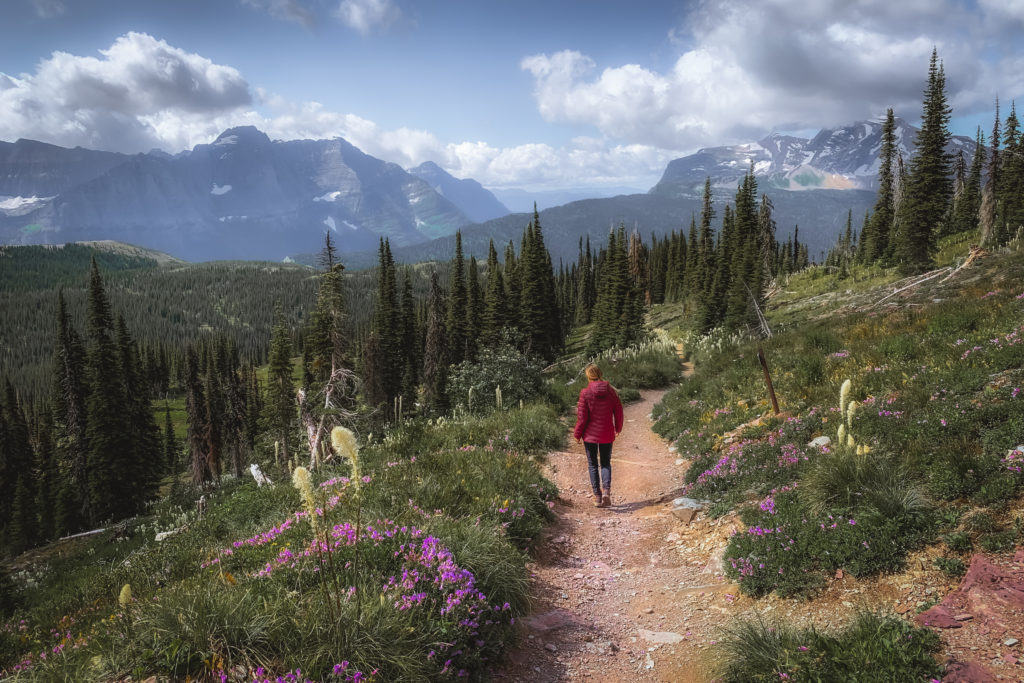
Granite Park Trail
If you’re not heading back on the Highline Trail, you’ll finish the trek along the Granite Park Trail for 4 miles until ending at the Loop. The first mile after the Chalet winds through rich forests of vegetation with various meadows and viewpoints. It’s not long before you’re weaving through remnants of a devastated forest from fire. Within these 4 miles down the Granite Park Trail to The Loop, we lose an elevation of 3500 feet.
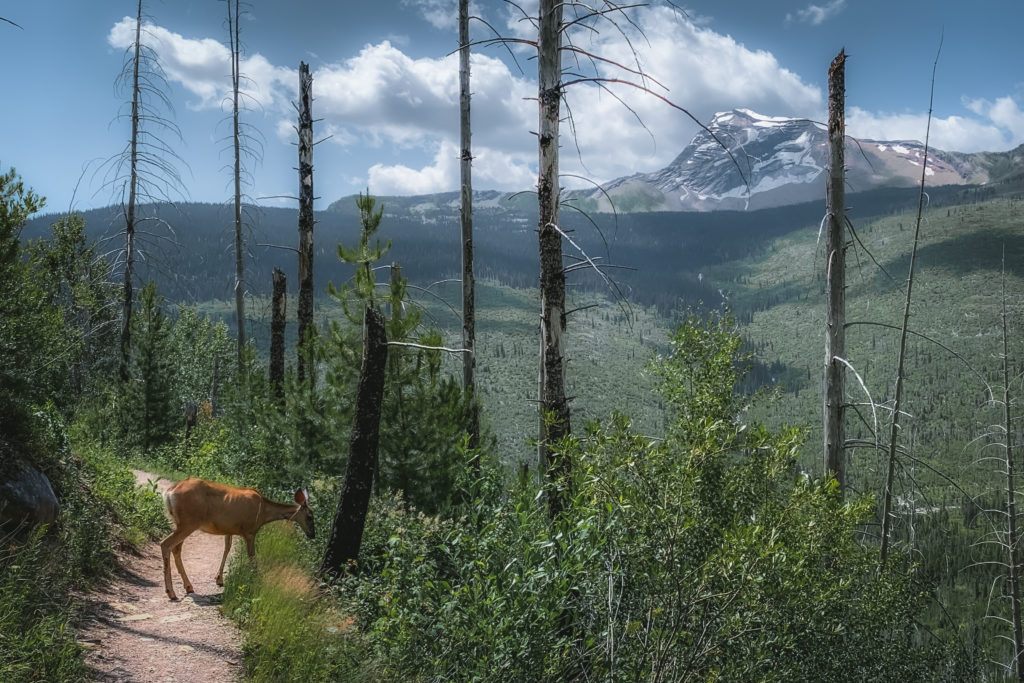
On one of the many switchbacks downhill, we notice two men looking up into the ridges. Following their stares, our eyes fall upon the first grizzly bear I’ve ever seen in the wild. He was munching on his huckleberries in the vegetation about 20 feet from us. The day after, I noticed an alert from the NPS that said the Highline Trail was shut down due to bears. I guess we timed that one right!
Check the alerts for trails in Glacier NP here
After reaching The Loop, we wait about 15 minutes for the next shuttle bus to return. From here, we make it back to our vehicle at Logan Pass, giddy that we finally completed the famous Highline Trail, the best hike in Glacier National Park.
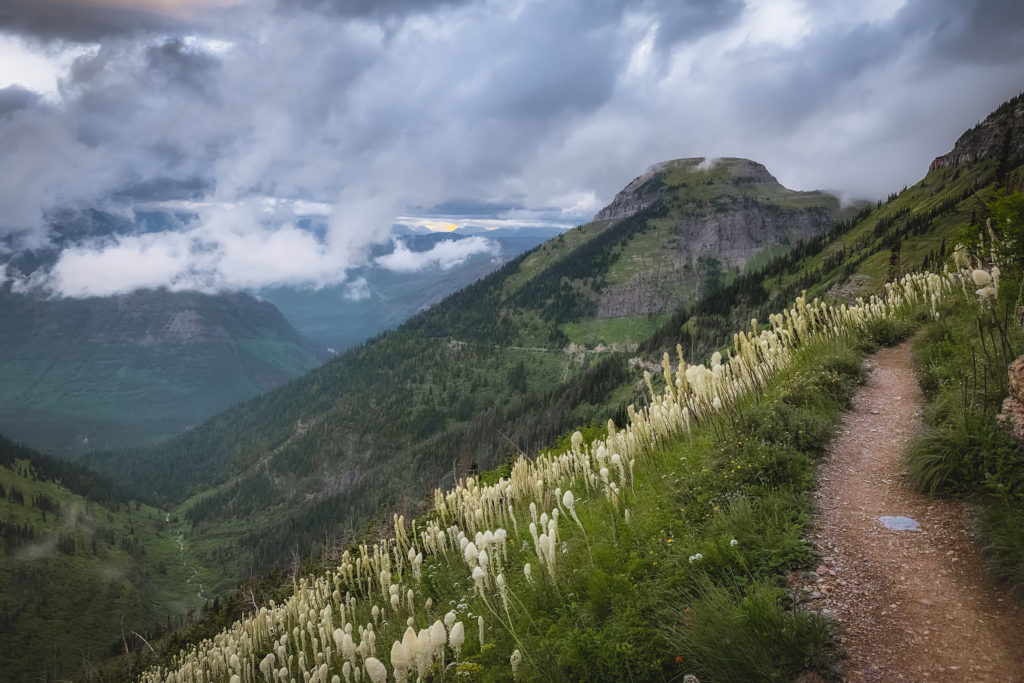
Read More Glacier Posts HereBefore heading out on trails, it’s imperative that you’re familiar with the “Leave No Trace” principles.
Read More: Leave No Trace: The 7 Rules of the Backcountry
Learn more about Leave No Trace on their website here.
Like This Post? Pin It!
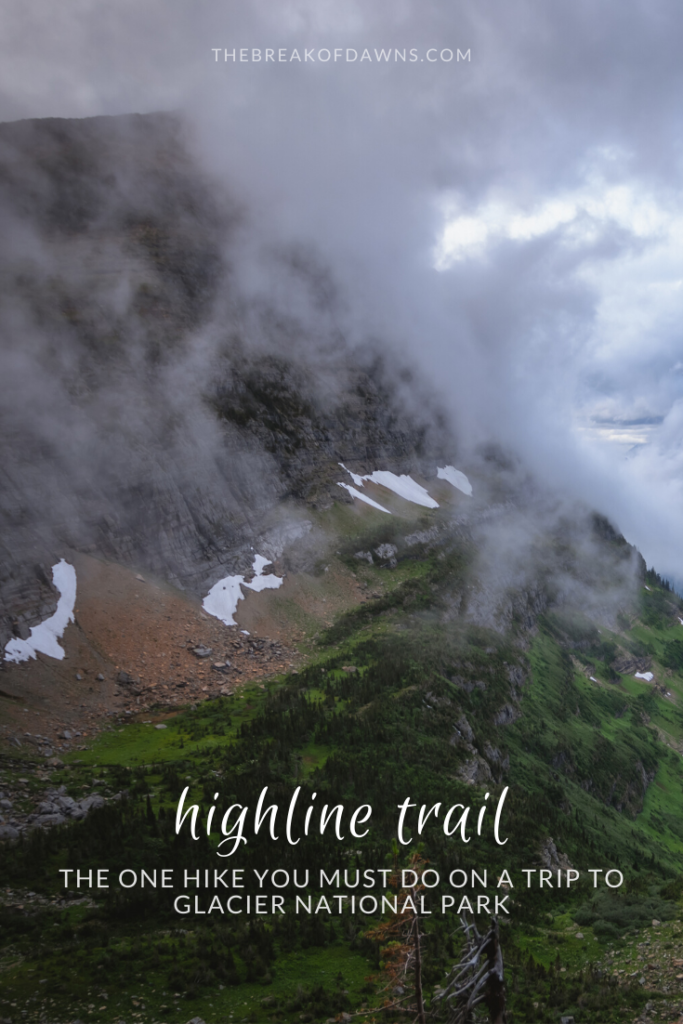
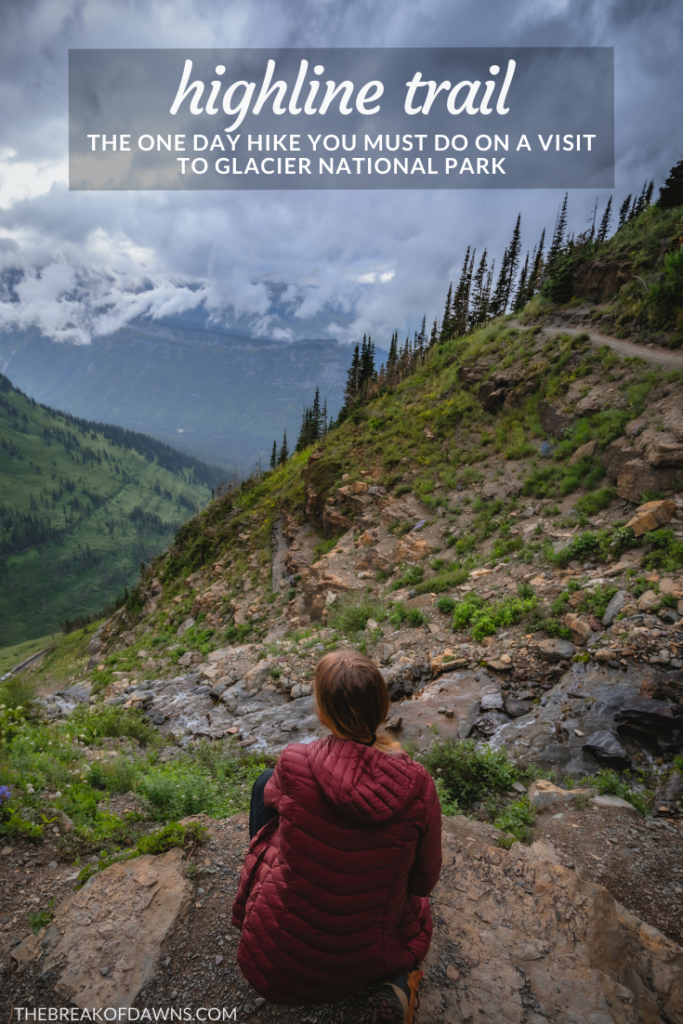
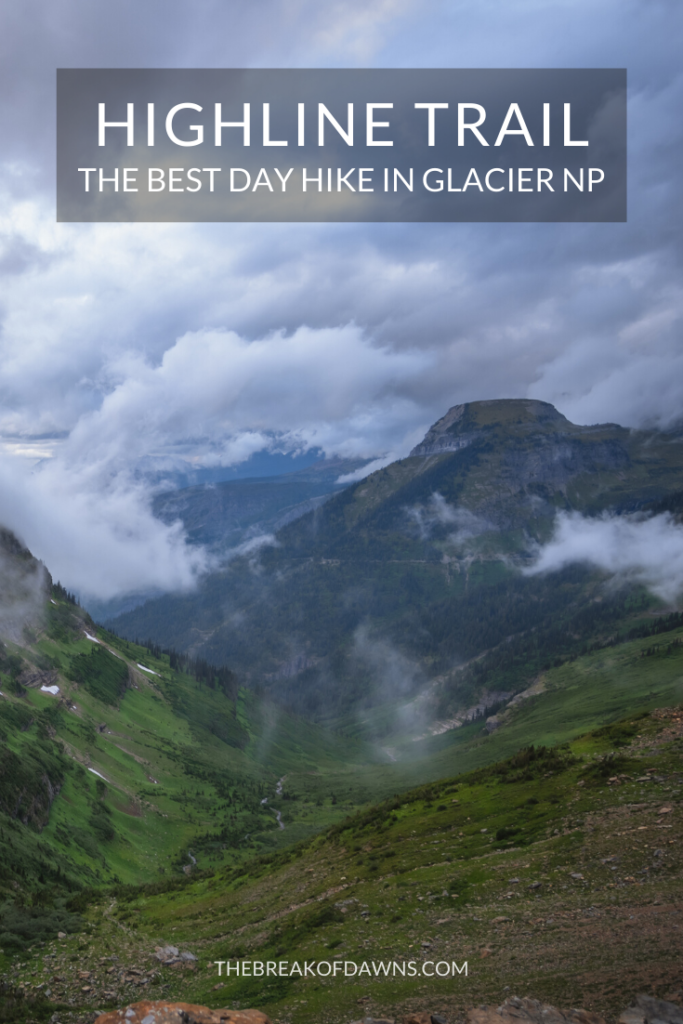
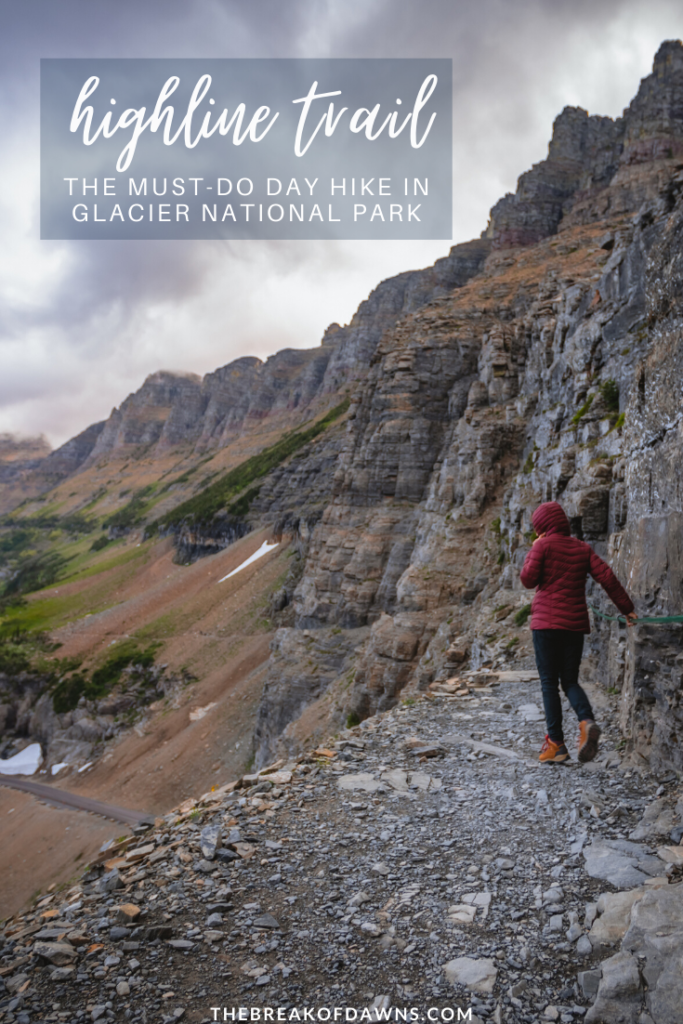

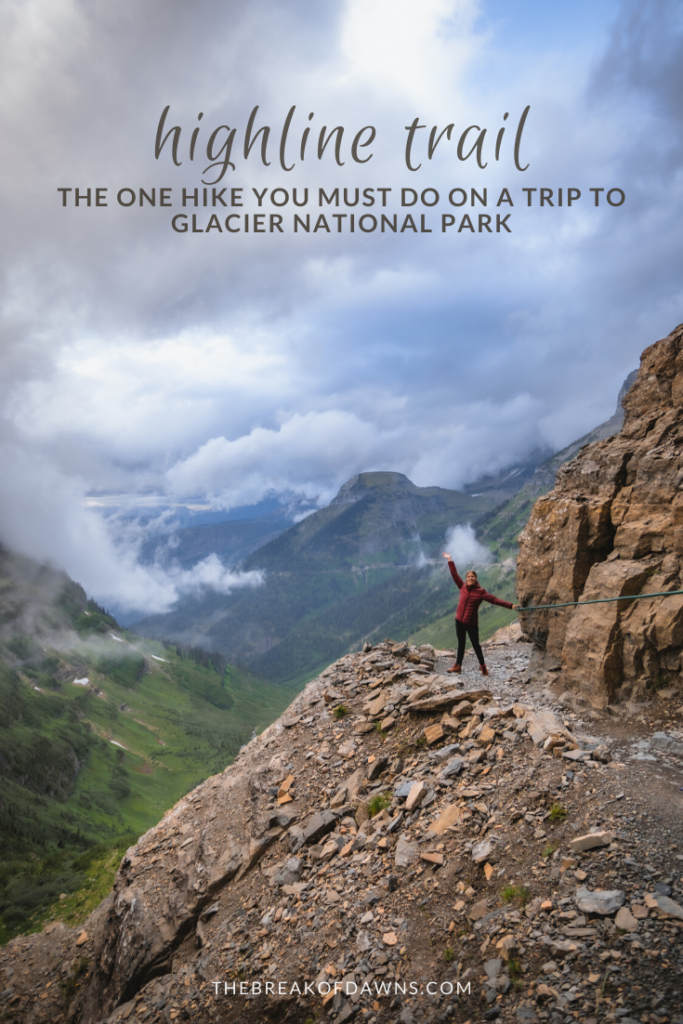
| This post contains affiliate links. At no extra cost to you, if you purchase one of these products I may receive a small commission. This helps me maintain my blog as a free space to you. Check out my Disclaimer for more info.


Love the nature photos!
Thanks girl! One of the most epic places I’ve been!
This photo-talk program was terrific. Your photos don’t do justice to the beauty around you, but they are terrific photos. George Bird Grinnell, a distant cousin of mine, explored between 1885 to 1898 the eastern half of what was to become a national park. In 1891 he began the effort to create the Park, which took him 19 years (until 1910) to complete. Two of the mountain peaks you mentioned, Mt. Gould and Mt. Reynolds, were named by him. My book, which was published in March 2020, explains the stories behind the 40 geographical features that he named. He was called The Father of Glacier National Park. There were no trails back then, so he and his small party of explorers rode horseback to discover and name everything from just north of Two Medicine Valley to the Kennedy Creek, including distant Mt. Cleveland and Mt. Seward and Seward Ridge and Mt. Norris to the south. They climbed dozens of mountains and glaciers, using the only hiking equipment of that era. Their boots wore thin, often allowing ice to seep into cracks in the soles of the boots. Too bad they didn’t have the equipment that we have now to hike and climb.
This comment made my day! I recognized your last name right away 🙂 Thank you for sharing your story and knowledge behind this amazing park!
Dear Sally?, Brenda? Dawn?
My book about the history of the Park, “The Father of Glacier National Park”, was just published and released March 2. I used my cousin’s daily field journals, 50 published articles about his expeditions, and his personal correspondence with his guides, expedition members, and Blackfeet Indians to write the book. Would you like to own a copy of the book which will be personalized and autographed? If so, reply to this email and I will send you particulars.
Hugh Grinnell